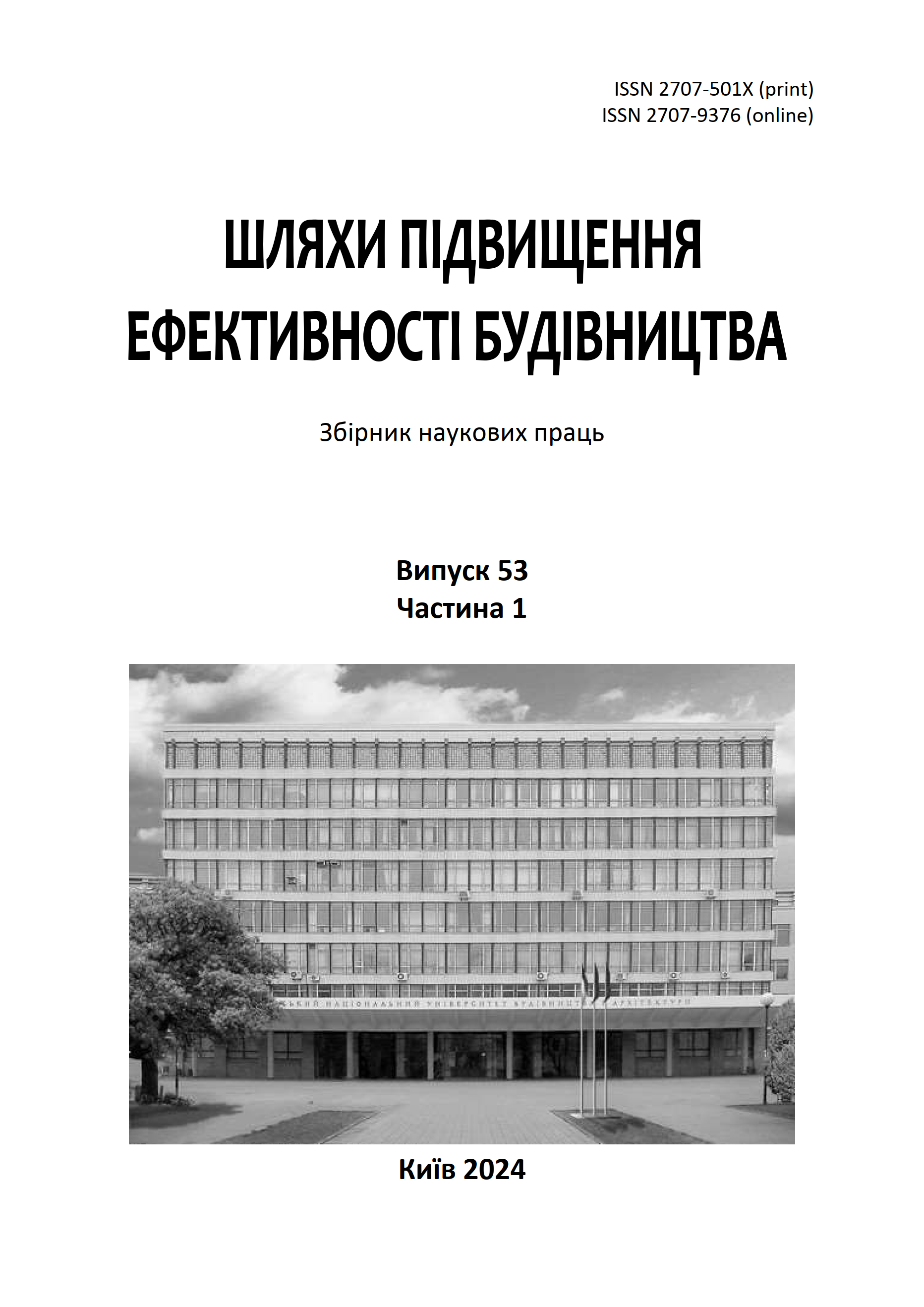Shallow tunnel construction technology using pneumatic formwork
DOI:
https://doi.org/10.32347/2707-501x.2024.53(1).103-110Keywords:
the technology of pneumatic formwork, undeground construction, tunnel construction, constructionn of shallow tunnels for subwayAbstract
This article considers the technology of underground tunnel construction using pneumatic formwork, which aims to improve and make easier construction of tunnel facilities. Having familiarized with problems of the construction, in particular subway facilities, and analyzed its basic aspects of this construction, I would like to propose using this technology for construction of shallow subway tunnels. The peculiarity of this technology is to optimize a building process and improve quality characteristics of constructed tunnels by replacing prefabricated elements with a solid monolithic tunnel which is built directly on the construction site. The fundamental technological difference is applying pneumatic formwork instead of standard formwork panels and systems of support posts and longitudinal beams. The main working element in pneumatic formwork system is a dome-shaped shell made of a durable membrane that serves as a formwork for concrete. This membrane is filled with air under high pressure using compressors and maintains its shape throughout the entire technological process until the concrete mixture sets. Such pneumatic formwork includes much fewer mounting elements, which improves technical and economic performance. Utilization of pneumatic formwork in modern construction can be a key point in improving technical and economic indices, as construction of such a formwork system takes much less time than for more common panel systems.
The development of pneumatic formwork technology has potential not only in the construction of subway but also in other construction areas. As an example, this method can be useful in solving an urgent issue of building bomb shelters for population, and even for enterprises because pneumatic formwork can be made in various shapes depending on the requirements for a particular facility
References
Шпакова, Г., Гриців, Б. Технологія влаштування підземних поверхів в існуючих будівлях з використанням вдавлювальних трубобетонних паль. Шляхи підвищення ефективності будівництва в умовах формування ринкових відносин. КНУБА, 2023. № 52. С. 22-33. http://ways.knuba.edu.ua/article/view/297546.
Petra C. van Hennik & Rogier Houtman. Textile Composites and Inflatable Structures II. Pneumatic Formwork for Irregular Curved Thin Shells. 2010.8: 99-116 р.
Kromoser, В. & Huber, Р. Pneumatic Formwork Systems in Structural Engineering. Vienna, Austria. 2016. 2-8 р.
Sobek, W. & Sobek, U. Auf Pneumatisch Gestützten Schalungen Hergestellte Betonschalen. Stuttgart, Germany, 1987.
Kromoser, В. & Huber, Р. Pneumatic Formwork Systems in Structural Engineering, 2016.
Bini, D. Concrete domes. Official Journal of the Master Builders' Association of New South Wales, vol. 3, no. 7. 1974.
Sobek, W. Ultraleichtbau, Stahlbau. 2014. Vol. 83, no. 11, pp. 784-789.
Bini D. Method for erecting structures. US Patent 3,462,521.1969.
Head J. No Nails, No Lumber – The Bubble Houses of Wallace Neff, Princeton Architectural Press. New York, NY, USA, 2011.
Kromoser B., Kollegger J. Application areas for pneumatic forming of hardened concrete. Journal of the International Association for Shell and Spatial Structures, 2015. Vol. 56. No. 3, рр. 187-198.
Kromoser B., Kollegger J. Herstellung von schalentragwerken aus Beton mit der ‘Pneumatic Wedge Method’. Beton-und Stahlbetonbau. 2014. Vol. 109. No. 8, рр. 557-565.
Kromoser B., Kollegger J. Pneumatic forming of hardened concrete-building shells in the 21st century. Structural Concrete. 2015. Vol. 16. No. 2. Рр. 161-171.
Herzog Т., Minke G., Eggers H. Pneumatische Konstruktionen: Bauten aus Membranen und Luft. Stuttgart: Gerd Hatje. 1976.
Quinn G., Gengnage, C. A review of elastic grid shells, their erection methods and the potential use of pneumatic formwork. in Proceedings of the 4th International Conference on Mobile, Adaptable and Rapidly Assembled Structures (MARAS '14), June 2014. Рр. 129-144.
Каталог компанії SO.CA.P, яка орієнтується на виготовлені мембранних опалубок у Італії. http://www.socapsrl.com/
Downloads
Published
How to Cite
Issue
Section
License

This work is licensed under a Creative Commons Attribution 4.0 International License.
Authors who publish with this journal agree to the following terms:
- Authors retain copyright and grant the journal right of first publication with the work simultaneously licensed under a Creative Commons Attribution License that allows others to share the work with an acknowledgement of the work's authorship and initial publication in this journal.
- Authors are able to enter into separate, additional contractual arrangements for the non-exclusive distribution of the journal's published version of the work (e.g., post it to an institutional repository or publish it in a book), with an acknowledgement of its initial publication in this journal.
- Authors are permitted and encouraged to post their work online (e.g., in institutional repositories or on their website) prior to and during the submission process, as it can lead to productive exchanges, as well as earlier and greater citation of published work (See The Effect of Open Access).

